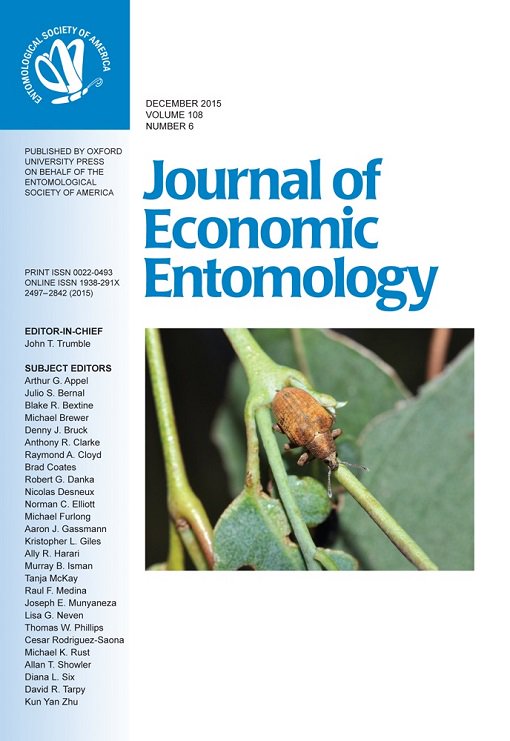Zebra chip (ZC), an economically important disease of potato, is caused by ‘Candidatus Liberibacter solanacearum’ (Lso) transmitted by the potato psyllid, Bactericera cockerelli (Šulc) (Hemiptera: Triozidae). Currently, using insecticides against potato psyllid is the only means to manage ZC. However, the ability of the potato psyllid to rapidly transmit Lso represents a substantial challenge in preventing the spread of ZC. Cyantraniliprole, a novel second-generation anthranilic diamide insecticide has been shown to deter insect feeding and reduce disease transmission. During this study, the effect of cyantraniliprole on potato psyllid probing behavior was assessed using electrical penetration graph technology and compared with abamectin, a commonly used insecticide to control potato psyllid. Results showed that both cyantraniliprole and abamectin significantly deterred probing behavior of the potato psyllid. Average duration of intercellular stylet penetration on cyantraniliprole- and abamectin-treated and untreated control plants was 2.36, 1.80, and 9.15 h, respectively. It took psyllids 1.82, 1.10, and 2.42 h to reach the xylem of cyantraniliprole- and abamectin-treated and untreated plants, respectively. Xylem sap ingestion duration averaged 0.53, 0.57, and 3.66 h on cyantraniliprole- and abamectin-treated and untreated controls, respectively. None of the psyllids exposed to insecticide-treated plants reached the phloem tissue, except one that bypassed the xylem. The insects completely ceased probing after 4.44 and 3.64 h on cyantraniliprole- and abamectin-treated plants, respectively, in contrast with those on untreated plants that probed throughout the entire 24-h experiment duration. These results indicate that cyantraniliprole is as effective as abamectin in deterring potato psyllid feeding and could significantly reduce transmission of Lso and the spread of ZC.
How to translate text using browser tools
1 December 2015
Effect of Cyantraniliprole on Probing Behavior of the Potato Psyllid (Hemiptera: Triozidae) as Measured by the Electrical Penetration Graph Technique
T. Mustafa,
J. M. Alvarez,
J. E. Munyaneza
ACCESS THE FULL ARTICLE
It is not available for individual sale.
This article is only available to subscribers.
It is not available for individual sale.
It is not available for individual sale.
abamectin
Bactericera cockerelli
cyantraniliprole
Liberibacter
zebra chip





